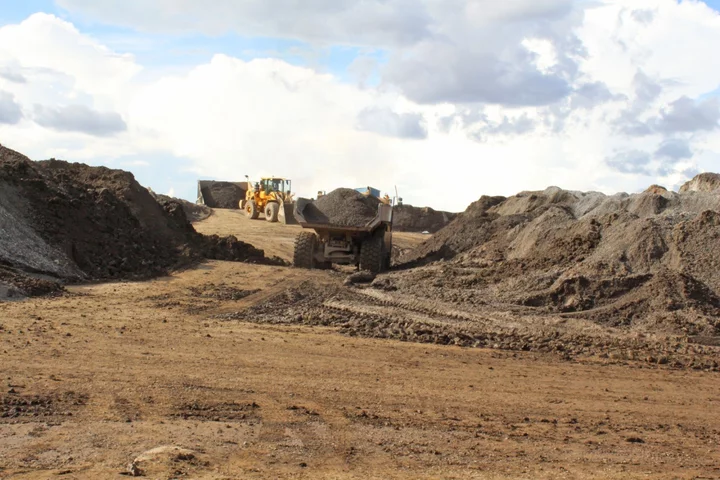The European Union and the US will launch the groundwork for a strategic corridor to connect resource-rich Democratic Republic of Congo and Zambia with the Atlantic Ocean via Angola as both allies compete with China to access critical minerals.
The EU’s executive arm and US officials will sign a memorandum of understanding to develop a corridor connecting southern Democratic Republic of the Congo and northwestern Zambia to global markets via the Port of Lobito in Angola, people familiar with the matter said. The EU and the US said last month that a first step would include feasibility studies for a new railway expansion between Zambia and Angola.
The agreement will be signed during a two-day summit organized by the commission on Wednesday and Thursday to roll out the Global Gateway, its €300 billion ($317 billion) infrastructure plan aimed at competing with China’s clout in strategic regions. The bloc is planning to sign more than 30 agreements with partner countries, including Mauritania, Moldova, Bangladesh and Kazakhstan. Some 20 heads of state or government are attending, including from Armenia, Somalia, Egypt, Congo and Morocco.
European Commission President Ursula von der Leyen didn’t mention China when she opened the summit on Wednesday, but she said the EU’s plan gives countries “a better choice,” noting that other infrastructure projects have come with significant tradeoffs when it comes to environment or labor.
“No country should be faced with a situation in which the only option to finance its essential infrastructure is to sell its future,” she said.
The EU´s infrastructure summit takes place only one week after China celebrated the 10th anniversary of its own ambitious global investment plan, the Belt and Road Initiative. Chinese President Xi Jinping said more than 150 countries and over 30 international organizations have signed cooperation documents. The project has drawn $1 trillion in its first decade, according to estimates from the Green Finance & Development Center think tank.
The EU´s infrastructure plan, by contrast, is in early stages and its complex structure relies on trying to leverage resources from member states, multilateral organizations such as the European Investment Bank and the European Bank for Reconstruction and Development, and the private sector.
“The initiatives are being rolled out within a governance structure that remains a work in progress, amid considerable uncertainty about what the strategy actually offers, what its actual priorities are and how capable it is of delivering results,” said a report commissioned by the European Parliament. “This being the case, most partners still lack a clear idea of how the GG (Global Gateway) functions and how they can participate in it.”
As part of the effort to bolster access to minerals, the EU will also sign two memorandums of understanding with Democratic Republic of Congo and Zambia, as Bloomberg previously reported.
Congo is the world’s largest cobalt producer, and it vies with Peru as the second-largest producer of copper, thanks largely to a surge in Chinese investment in recent years. Zambia is also a key copper producer, and western governments have been seeking to strike alliances with both countries to challenge China’s dominance in critical minerals supply chains.
Other agreements that the commission is signing with third countries include:
- Green hydrogen initiative in Mauritania
- A financing agreement for a green economy program in the Philippines
- Announcement of the launch of negotiation for an EU-Uzbekistan Critical Raw Materials agreement
- North-South railway corridor in Moldova
- Aktau Port Modernization Project in Kazakhstan
- Renewable energy package with Bangladesh
- Kakono hydropower plant in Tanzania
- EU-Somalia partnership multi-annual action plan 2023-2024
- Roadmap for the EU-Namibia agreement on sustainable raw materials value chains and renewable hydrogen
- Special measures on manufacturing and access to vaccines, medicines and health technologies
(Updates with von der Leyen quote starting in fourth paragraph)

